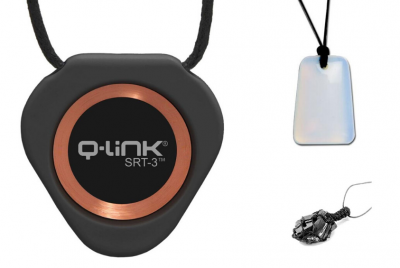When worn correctly, both Bluetooth and wired earbuds offer a lightweight and comfortable way to listen…
EMF Shielding in the Bedroom: Everything You Need To Know

*We may earn a commission for purchases made using our links. Please see our disclosure to learn more.
Your bedroom is your sanctuary. It is where you sleep, de-stress, and finally get to rest after a long day. But, if your bedroom’s EMF radiation levels are high, you may not be getting the rest you really need.
Sleep is a hugely restorative time for your body. If you are exposed to harmful EMF radiation during this time, however, it can interrupt this natural healing process, as damage is being done at the same time your body is trying to repair itself. That is why keeping EMF radiation in the bedroom to a minimum is so critically important. Indeed, if there is only one room you worry about your EMF exposure in, make it the bedroom.
To help, here are a few tips for reducing your bedroom’s levels and lowering your exposure at night.
Measure your EMF levels
The first step towards minimizing EMF exposure in the bedroom is figuring out what the EMF levels are in there to begin with. This can be done using an EMF meter, a useful tool that measures ambient EMF levels.
When it comes to EMF meters, we love the TriField TF2. It’s an entry-level meter, but it does everything you need to check your home’s EMF levels, including measuring electric fields, magnetic fields, and radio frequency waves. We cover the TF2 and other meter options in The Best EMF Meters For Any Budget.
To measure your bedroom’s EMF levels, simply set up the room as you would normally have it while you sleep at night — plug your phone into the charger, for example, and turn on any night lights or other devices you use. Then, turn your meter on. The most important area to measure is on your bed, as well as any other higher-traffic parts of the room.
Take note of the levels present. This is what you are currently exposed to as you sleep at night. As you implement measures to reduce your exposure, repeat the measurement process to get a feel for how much it helped and if further intervention is necessary.
Turn off your cell phone
Many of us opt to sleep with our cell phones on our nightstands or in another location easily accessible from the bed. This may make it easy to play on your phone at night, answer emergency calls, and shut off the alarm in the morning. The drawback, however, is that the closer you are to your cell phone, the more EMF radiation you are going to be exposed to. The absolute best thing you can do to minimize this is to put your phone in airplane mode at night, or shut it off completely. This step alone may bring your bedroom’s EMF levels down into a safer zone. For more information on cell phone radiation protection, see our in-depth guide here.
Maintain a distance
Whether you’re on call or need to remain reachable for other reasons, shutting your phone off at night is not a practical solution for everyone. If you aren’t able or comfortable switching into airplane mode, the next best alternative is to simply keep your phone across the room. If possible, aim to put at least six feet of distance between your bed and the device. It may not be the most convenient thing, but it will drastically lower your EMF exposure. As an added bonus, jumping up to turn off your alarm makes it that much easier to resist the temptation of the snooze button.
Ditch the TV
Watching TV in bed can feel like a luxurious activity, and for some, the light noise created by the TV can actually help lull them to sleep. Unfortunately, television sets, particularly smart TVs, also produce EMF radiation. For that reason, it may be for the best if you and your bedroom TV set part ways. One potential compromise is to watch a movie on your phone or tablet before bed, then shutting the device off or placing it across the room when you are done. If you absolutely can’t live without the TV, try and place it as far from the bed as possible.
Use a Low EMF alarm clock
Believe it or not, even your alarm clock could be a source of bedroom EMF radiation. Many newer alarm clocks have advanced features such as Bluetooth connectivity that can really increase your room’s EMF levels. Furthermore, they sometimes use blue light in the digital display, which has been shown to disrupt the body’s natural production of melatonin, a chemical necessary for deep sleep.
Ditching the alarm clock may not be practical, especially if you have to get up for work or to get the kids ready for school. In that case, you may want to consider finding a low EMF alarm clock. These are often battery operated and analog style, but they are just as effective at waking you up in the morning.
Turn off WiFi
WiFi may feel like a modern must-have, helping us keep dozens of devices throughout the home connected to the internet. And while it certainly serves a purpose, the waves used to carry the WiFi signal through your home are a form of RF-EMF radiation. This radiation reaches every part of your home that the WiFi signal reaches, including your bedroom.
There are a few things you can do to fix this. The easiest solution is to simply turn your WiFi off at night while you sleep. Some routers even have accompanying software that allows you to designate quiet hours where the WiFi will shut off automatically. Other alternatives include switching to a wired internet connection or investing in a WiFi router guard.
For more on the potential health effects of excess exposure to WiFi, check out our article here.
Be mindful of lighting
Lighting is another, often overlooked source of EMF radiation. There are many different types of lightbulbs out there — WiFi or Bluetooth connected smart bulbs, LED bulbs, incandescents, and CFLs are all potential options. Take a look at the various light fixtures in your bedroom and note what type of lightbulbs you have in there.
Depending on the type, it is possible that your light bulbs are contributing to your room’s EMF levels. Smart bulbs are major culprits due to their internet connectivity, but LED and CFL bulbs aren’t much better. If you are trying to reduce your room’s EMF levels, your best bet is to switch to basic incandescent bulbs, preferably in soft white. Cool blue may create a crisper light, but they also produce blue light which, as we mentioned earlier, can disrupt your sleep as it alters melatonin production.
Protective sheets and blankets
Your sheets and blankets are not a source of EMF radiation (unless you’re using an electric blanket). Nonetheless, they represent an opportunity to shield yourself from surrounding radiation as you sleep. Protective sheets and blankets can help keep your body protected at night, making them a worthwhile investment if you have made some changes and still can’t seem to get your EMF levels in a comfortable range.
Many EMF blankets are a little on the smaller size, which may not be ideal for your main sleeping blanket. You could try something like DefenderShield’s EMF Radiation Shielding Blanket and simply put it over or under your existing quilt. Or, if you would prefer a bigger option, there is also Breezy Baby’s Adult EMF Shielding Blanket, which, at 60” x78”, is a reasonably sized quilt replacement. We discuss some other options, as well, in the Top 10 EMF Protection Blankets.
EMF bed canopies
If you’re unable to make other changes to reduce your room’s EMF levels, or if you have done so and still aren’t within a comfortable zone, an EMF bed canopy is an excellent solution. These canopies are made from protective fabric and they drape over your bed. In order to be effective, it is important that you fully close the canopy after climbing into bed, making sure there are no gaps where EMF radiation could enter.
EMF bed canopies are highly effective at protecting against EMF radiation while you are in bed. There are dozens of options out there. One popular one is by BlocSilver. Their EMF Shielding Bed canopy can effectively block frequencies up to 40GHz, making them effective against 5G and just about any other common form of EMF radiation. We cover a few other options in EMF Bed Canopies: Everything You Need To Know.
Painting the walls
Last, but not least, if your room backs up to a smart meter or another significant source of external EMF radiation, one thing you can do is coat all or one of the walls in EMF paint. It’s worth noting you don’t need to necessarily paint the entire room, although you certainly could. Rather, just the interior wall that faces the external source is usually good enough.
EMF paint essentially blocks EMF radiation from passing through it. You usually paint two coats, and can then cover it up with whatever color of silicone-based paint you want. Oftentimes, you are required to have a licensed electrician ground the paint before it becomes truly effective. We talk about EMF paint in much greater detail over in EMF Shielding Paint: A Quick Primer.
Parting thoughts
While all of the steps above may not be practical, implementing just a few can go a long way towards lowering your EMF exposure and allowing you to receive a more restful and restorative night’s sleep.



